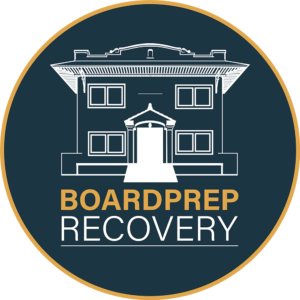The current COVID-19 pandemic, having increased the overall stress (and in many cases, trauma) of countless healthcare workers in the U.S., can be counted as one of a significant number of challenges facing nurses today. Given these present demands have wide-ranging effects on the physical, mental and emotional dimensions of nurses’ lives, it makes sense substance use disorders are more common in nurses than one might imagine.
Studies have shown substance abuse disorders (a.k.a. chemical dependency or addiction) can affect nurses at a rate equal to, if not higher, than the general population. Approximately one nurse in ten (10%), in fact, will abuse or become addicted to alcohol or drugs during their career.[1] And research indicates nurses will binge drink more often than the norm and have higher levels of prescription drug abuse, as well.[2]
The question of “Why?”—when looked at objectively—produces answers that are not really all that surprising. Below, you’ll find five major contributing factors that put nurses at risk for developing problems with substance abuse and addiction.
1) Tiredness and Fatigue
Most nurses work every day in places where controlled substances (e.g., opioids, benzodiazepines, amphetamines, anti-depressants, etc.) can be procured and/or diverted. In their ability to “take some for themselves” (giving only a portion of what’s prescribed for their patients), this “easy-access” environment has been shown to be a risk factor for nurses — they’re more likely to use drugs when their workplace access to them increases.[3]
2) Stressful Work Conditions
Since day in and day out, nurses are responsible for the welfare of their patients, the “load on their shoulders” can become overwhelming for many nurses. The burden of responsibility—and corresponding stress levels—can only be made worse by not having sufficient resources and support, as well as increased work hours and shifts. Research on nurses points to chronic stress as a factor in their substance use, plus it being a “significant risk factor for the development of addiction.”[4]
3) Ease of Access
Due to the frequency with which nurses are required to work extended hours and rotating shifts, their exhaustion levels can become overwhelming. Studies point to burnout and diminished health in nurses being a result of regularly being required to work 12-hour shifts.[5] This is not to mention they’re often asked to work nights, weekends and holidays—especially during the COVID pandemic—as well as countless numbers being on call, meaning the need for them to be available to work on short notice, leaving them sleep-deprived and insufficient “down time” to rejuvenate properly. This can lead to some nurses turning to alcohol and/or drugs to “take the edge off.” And given the addictive power of alcohol or many prescription drugs (especially opioids), substance use disorders can arise quicker than one can recognize.
4) Chronic Physical Pain
Given the typical nurse’s shift requires her/him to be on their feet constantly, as well as bending, stretching and standing, they’re regularly faced with aches and pains. Plus, nurses are also vulnerable to back injuries, due to the necessity that they regularly lift or move patients. Many nurses turn to prescription painkillers originally prescribed for their patients (see “Ease of Access” above) to ameliorate their pain. However, so often these prescription painkillers (particularly opioids) are not intended for long-term use and end up putting nurses at risk of becoming addicted to them.
5) Insufficient Education About Addiction and Drug Abuse
The fact is, collegiate coursework and medical internships nationwide are still lagging behind in terms of providing sufficient knowledge about substance use disorders, as well as the nature of recovery. The consequences of this are many, but include nurses not being able to properly and consistently identify and address the signs and symptoms of addiction and abuse in themselves or their colleagues. It also perpetuates negative stereotypes and stigmas associated with chemical dependency among nurses,[6] hence deterring nurses from being open and asking for help when it’s needed.
Fortunately, most state nursing boards provide non-disciplinary options for nurses struggling with substance use disorders, in the form of referrals to evidence-based addiction treatment programs that specialize in helping healthcare professionals recover from addiction, as well as peer assistance and recovery monitoring programs, once treatment is completed. And the good news is this: longitudinal research has demonstrated that nurses who participate in these programs have a higher rate of long-term recovery than people with addiction from the general population.[7]
[2] Kenna, G. A., & Wood, M. D. (2004). “Alcohol use by healthcare professionals.” Drug and Alcohol Dependence, 75(1), 107-116; National Council of State Boards of Nursing. (2011). “Substance Use Disorder in Nursing.”
[3] Trinkoff, A.M., Zhou, Q., Storr, C.L., & Soeken, K.L. (2000). Workplace Access, Negative Proscriptions, Job Strain, and Substance Use in Registered Nurses. Nursing Research, 49(2), 83-90.
[4] Sinha, R. (2008). Chronic stress, drug use, and vulnerability to addiction. Annals of the New York Academy of Sciences, 1141(1), 105-130.
[5] Ibid.
[6] Howard, M.O., & Chung, S. S. (2000). Nurses’ attitudes toward substance misusers. III. Emergency room nurses’ attitudes toward impaired nurses, and the studies of attitudinal changes. Substance Use & Misuse, 35(9), 1227-1261.
[7] Smith, L.L., & Greene, M. (2015). Florida Intervention Project for Nurses: A National Model for ADP and Nurse Assistance. Journal of Addictions Nursing, 26(3), 159-162.







